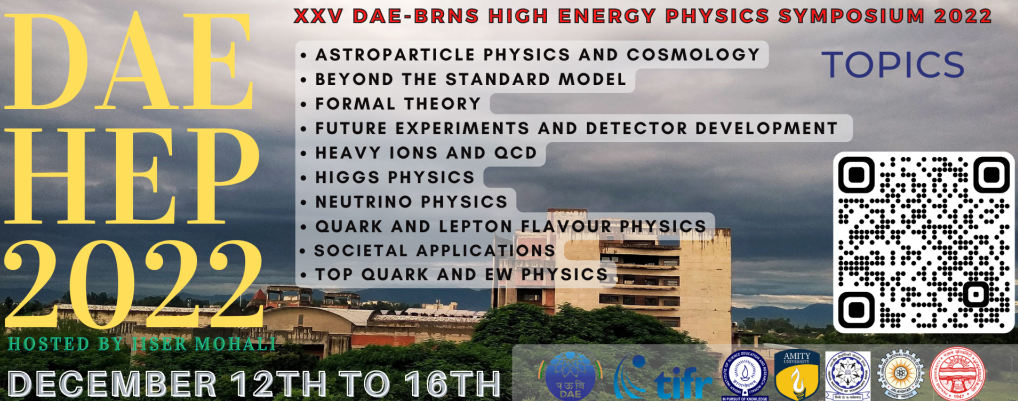Speaker
Description
The fireball of quarks and gluons formed in relativistic heavy ion collisions converts to hadrons as it cools below the chiral crossover temperature $(T_{CO})$. The hadrons so formed may further interact till a point where the densities are low enough to make the reaction rates negligible. After this the yields of individual species do not change significantly and get essentially fixed. This is called chemical freezeout. The freezeout parameters have been extracted using statistical models through fitting to mean hadronic yields. A numerical coincidence arises at zero baryon chemical potential where the extracted chemical freezeout temperature matches with the chiral crossover temperature obtained through lattice QCD. This has till now been treated as only a coincidence without much physics reasoning attributed to it.
We explore the dynamical origin of chemical freezeout by examining the chemical relaxation time of a gas of the SU(3) octet of pseudoscalar mesons in the linear response approximation. The cross-sections are computed using amplitudes from unitarized chiral perturbation theory at next-to-leading-order. With only 12 input parameters namely the pion decay constant $(f_\pi)$, three masses $(m_\pi,\ m_\eta,\ m_K)$ and 8 low energy constants, the amplitudes agree with scattering data and generate the resonances up to masses of about 2 GeV. Our results show that the relaxation time is large (about 100 fm) near $T_{CO}$ and the system cannot remain in chemical equilibrium once it enters the chiral symmetry broken phase. The long relaxation times are directly related to the fact that these mesons are pseudo-Goldstone bosons of chiral symmetry breaking. We further argue that as the relaxation time near $T_{CO}$ is much larger than the typical timescale for expansion, freezeout has to occur at the chiral crossover temperature.
| Session | Heavy Ions and QCD |
|---|
